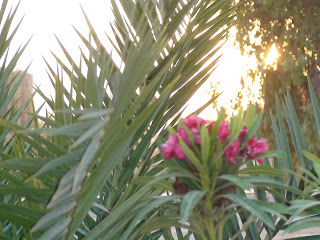My interview was published in Kurdish language the 10th March 2010 in Hewler newspaper, a daily newspaper which is distributed free of charge. The interview was done by Wirya Rehmany.
Here are Wirya's questions and my answers:
What is your idea about genocide of Kurdish nation in all parts of Kurdistan (especially Kurdistan of Turkey and Iraq)?The genocide process started when Kurdistan was divided in the Treaty of Lausanne. Kurds become an unregocnised minority in Turkey. In Iraq they did not get cultural or linguistic rights, despite they were recognized as a minority.
Iraq and Turkey started immediately to assimilate Kurds by force. But Kurds did not accept to become Turks and Arabs, they arranged uprisings. Turkey and Iraq replied by force, not by negotiations and compromises. The oppression had from the 1920s genocidal character but it started with milder forms than massacres, for example by cultural and linguistic assimilation. The peak of the genocide process was the Anfal in 1988.
Which kinds of genocide happen in Kurdistan (physical, cultural genocide and etc?State violence in both Iraq and Turkey towards the Kurds increased from forced assimilation to harder violence, to deportations and massacres.
Polist jurist Raphael Lemkin, on whose theory the United Nation Convention against Genocide is based, has described eight genocidal methods. He analyzed Holocaust, the genocide of the Jews during the Second World War. The methods are: political, social, cultural, economic, biological, physical, religious and moral genocide.
I think Saddam Hussein used all these methods against the Kurds except the last one. He could not break their moral. Lemkin means by moral genocide for example increase in alcohol consumpition. As far as I know alcohol or drugs are not a problem among the Iraqi Kurds. But in Iran the use of drugs, especially opium among Kurdish youth is so big problem that maybe it fits Lemkin's describtion of a moral genocide.
I add two genocidal methods: ecological and statistical genocides. Saddam Hussein used both of them in Kurdistan, and they cause still serious problems.
Ecological genocide means destruction of the environment permanently so that it effects life of the target group for many generations. Maybe in some areas it will turn permanently impossible to live in.
Iraqi army bombed Halabja by chemical weapons, and the poisons are still in the environment. The ground water in Halabja is polluted, no one knows how badly. Halabja people have much more cancer and other diseases than Iraqi people in general.
Another example is Germia. The side effect of deportation of hundreads of thousands of people to so called model villages is pollution of the environment. The areas which were first refugee camps have become permanent residence areas. For example Kalar is on the edge of desert. The arrival 200 000 people causes permanent damages to the vulnerable environment. The ground water will run out after some decades and the area becomes desert. Next generation must search a better place to live.
Statistical genocide means falcification of statistics and research. Saddam practised it especially in Kirkuk province.
How do you see the Halabja and Anfal case in high tribunal of Iraq? If Halabja chemical bombardment is genocide and why the court didn't recognize it as genocide?I am not familiar to these trials. I see that the Kurdish genocide is a process which has lasted many decades. Halabja chemical bombardment lasted a few days and the Anfal three months. Iraq and the international community should regocnize the whole genocide process in Kurdistan. Halabja bombardment and Anfal are the most horrible parts of it. But there has been massacres in Halabja, in Karadaghi, in Barzan and in many other places since the 1960s. The people who have been murdered in them are also victims of genocide, not victims of "ordinary massacres".
What is the importance of recognition of Kurdish genocide in international arena?I see that it is a necessary step in finding solution to the Kurdish question. Other genocides, like the one in Rwanda and Kamputcea, have been surveyd by local and international researchers. Only by making in-depht research the complexity of the genocide process can be understood. There is still danger of new genocides, especially in the disputed areas. To prevent them it is necessary to understand how the process developed little by little in other Kurdish areas.
What should Kurdistan regional government doing about Kurdish genocide (especially in international community).KRG should establish a genocide research institute. Many reports have been made about Anfal and other genocidal acts. But there is need also for in-depth analysis about the Kurdish genocide. It should be done according international academic standards. KRG should study how the Armenians succeeded getting their genocide of 1915 regocnized by the international community. Their lobby in Washington, Paris and London is based on decades long support for the research about the Armenian genocide.









































